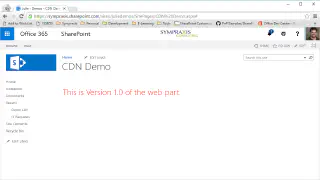
For this last post I want to take what we’ve learned and add the final pieces that have you creating web parts in the same way you would modern SPFx web parts and solutions. We’re going to start by discussing TypeScript and then briefly touch on Sass and how to include these languages into your new Webpack/Gulp environment.
TypeScript is becoming almost ubiquitous in modern web development. The pros are numerous, my favorites are the ability to write code to target older browser with modern capabilities, and the ability to use a version of intellisense to validate your objects properties and methods. In my experience both of these features makes development go faster. The cons are that you’ll need to transpile your code as well as utilize typings for the libraries you want to include. By using Visual Studio Code, or another IDE as your development environment TypeScript is pretty much built in. If you are coming from C#, or some other compiled language, you’re going to find that you feel significantly more comfortable writing TypeScript than JavaScript, mainly because many of the conventions you’re used to have an equivalent in the TypeScript language and thus patterns like MVVM are easily implemented.
[Continue Reading]







